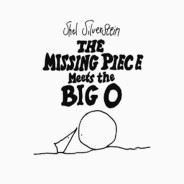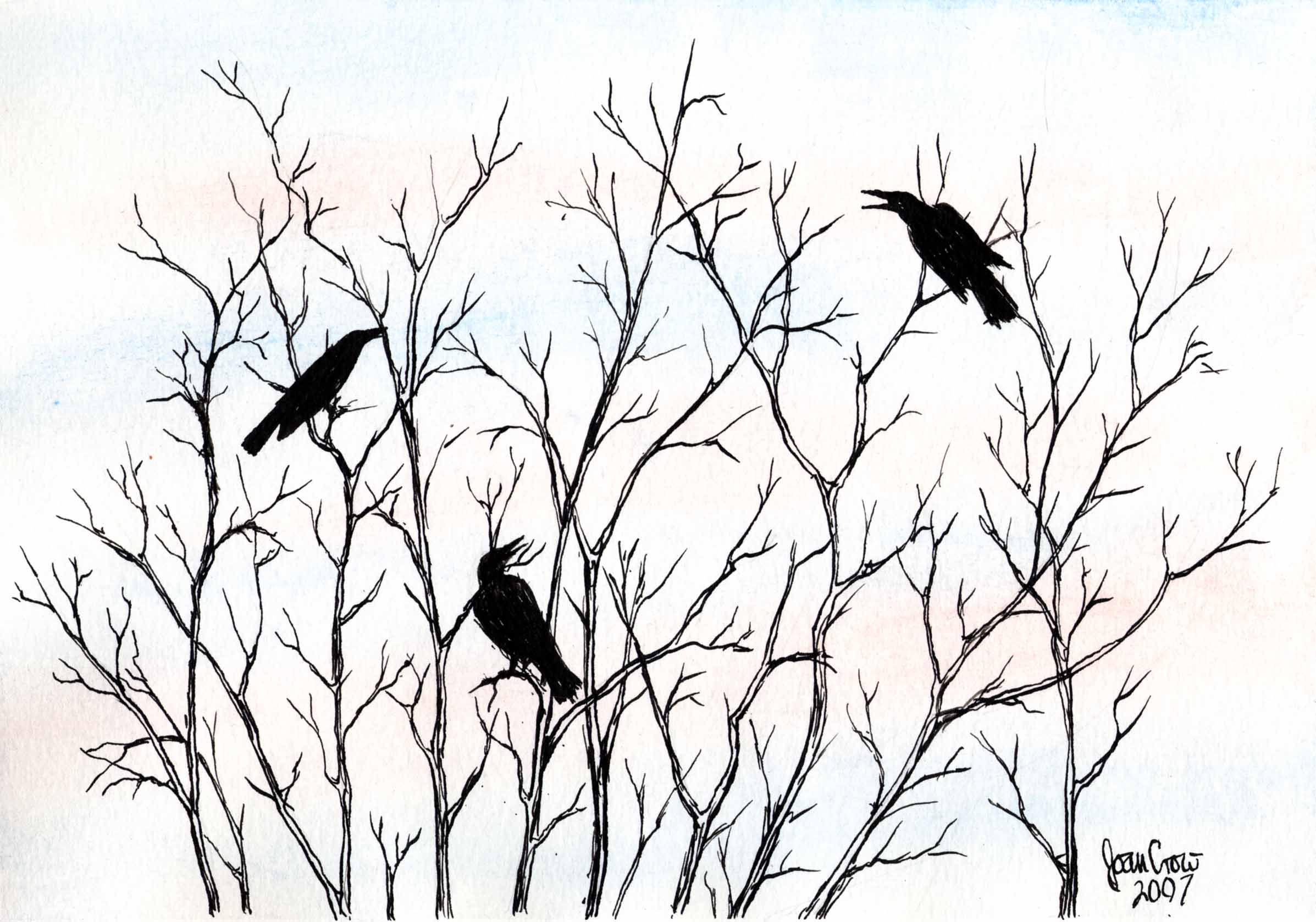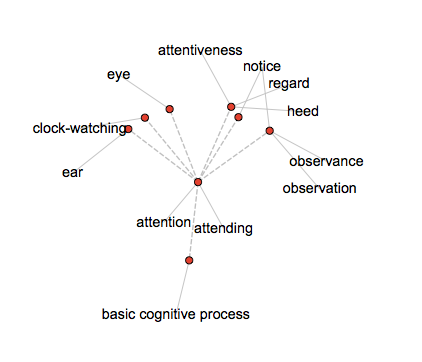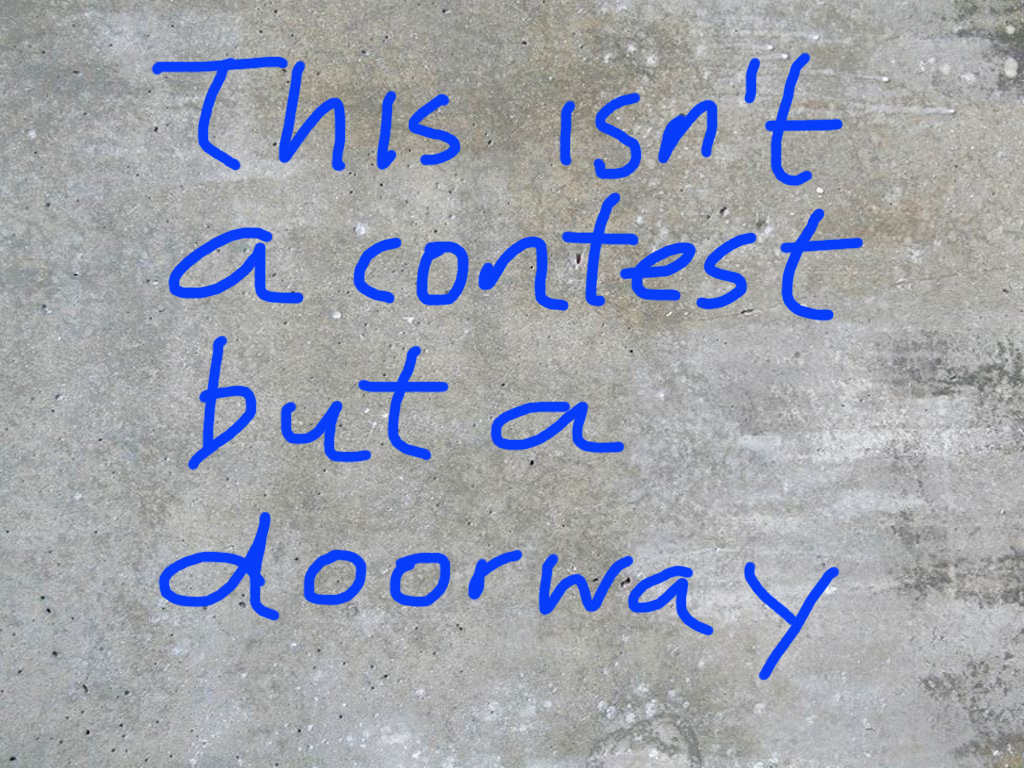Blog
The Missing Piece Meets the Big O by Shel Silverstein
It’s not quite a poem. Shel Silverstein’s book is more like a fable, but with shapes instead of tortoises or rabbits. Perhaps you’ve read it at one time or another. For some reason I’ve missed it all these years and just recently was delighted to come across it. In the animated version I’ve embedded here, there’s this lovely piano music and it adds to the sense of whimsy and lightness as you watch it unfold—the journey of the missing piece. Sometimes fables can be heavy but this one doesn’t feel heavy to me. It has a wonderful lightness and humor and makes me want to read more of Silverstein than I already have. So much of this story I love—he gets the small moments just right—but I suppose my favorite moment is that moment right smack in the middle when the story shifts. I read recently that John Gardner once said there are only two kinds of stories: a person goes on a journey or a stranger comes to town. At the midpoint of Silverstein’s story—minute 3:09 in this video—“one came along who looked different.” It’s like the perfect meeting of both kinds of stories: a person goes on a journey and then a stranger comes along. At this point the entire story begins to shift. Something new begins to happen . . . I think this has something to do with the guest house–we welcome something or someone new–and then something new happens. Maybe . . . I hope you enjoy! _____________________________________________________ See also: Shel Silverstein’s site...
read moreListening for the Voice of the Body
It has taken me longer than I intended to post another chapter from my book draft–but here it is! It fits in well, I think, with this whole thread of attention I’ve been exploring in the past month. Sometimes it makes sense to listen to the voices around us–all the people and characters–and birds! this morning such a racket of birds!–that inhabit our worlds. Other times the body clamors to be heard. It needs to be heard. It demands to be heard. Our own bodies like the call of birds at the window. Pay attention! Pay attention! Pay attention! So here tis. Chapter 5 of One Year of Writing and Healing: Listening for the Voice of the Body Much thanks to those who gave permission for their stories to be told within. I am deeply honored and grateful. ________________________________ See also: Book chapters 1-5 Photo from Crow...
read moreAttention Must Be Paid, Part 2
So this coincidence occurred. The very same day I was reading about attention, rereading what Sharon Begley says about attention in Train Your Mind, Change Your Brain, I also happened to be preparing to teach Death of a Salesman to my seniors. I looked for an excerpt online and downloaded it so we could read it as a preview to reading the entire play. The excerpt is a brief 4 pages. In it I was surprised to come across this, a speech by Willy Loman’s wife, Linda: I don’t say he’s a great man. Willy Loman never made a lot of money. His name was never in the paper. He’s not the finest character that ever lived. But he’s a human being, and a terrible thing is happening to him. So attention must be paid. He’s not to be allowed to fall into his grave like an old dog. Attention, attention must be finally paid to such a person. Here then is the same line Sharon Begley uses as a heading to introduce the notion of attention in her book: attention must be paid. You may already be quite familiar with the play. In it Willy Loman, played by Dustin Hoffman in one of the film versions, is a salesman who has tried to live his version of the American Dream—be well liked, become successful through being well-liked, do whatever it takes to become well liked, and, perhaps most important of all, have well-liked and successful sons. It isn’t working out so well for him. He’s past mid-life and things are falling apart. He’s getting increasingly confused. He’s living in the past, talking to ghosts. In this context, the lines his wife says are so powerful: He’s not the finest character that ever lived. But he’s a human being, and a terrible thing is happening to him. So attention must be paid. What struck me in particular about this is the way it got me thinking of what it is we direct our attention to. We’re awash in sensory stimuli—billions of neurons potentially firing—and amidst this sea we’re always choosing where to direct our attention. I’d been thinking of attention as important in directing us toward what’s valuable in our environment—the jewels among the debris—what we want to hang on to and remember and learn. What I’d missed—and what this excerpt reminded me to consider—is the way we also have to direct our attention toward what is painful—toward those who are suffering—and toward those who perhaps have something to teach us in their suffering. The closer I look at Arthur Miller’s play the more I see it as brilliant. Willy Loman was trying to live by a myth he believed in—and the myth is failing him. He’s a human being, and a terrible thing is happening to him. Another thing I did with my seniors before starting the play was to ask, Should literature be studied in high school? Why or why not? Out of twelve or so small groups that gave mini-presentations, eleven were in favor of it. (The twelfth group wanted to deal more with song lyrics and films, which could be, depending on your definition, a kind of literature.) A thread running through nearly all of their presentations was the way that reading has the...
read moreAttention Must Be Paid
I’ve been thinking a lot lately about the act of paying attention and what that means. Last year around this same time I came across a cover article in Newsweek entitled Grow Your Mind. It was by Sharon Begley, author of Train Your Mind, Change Your Brain, a book on neuroscience and Buddhism that I read some years ago and liked quite a bit. This past week, I found myself going back to the article because of something I remembered her saying about the act of paying attention. I found this: One of the strongest findings in neuroplasticity, the science of how the brain changes its structure and function in response to input, is that attention is almost magical in its ability to physically alter the brain and enlarge functional circuits. Attention is almost magical. I went back to her book, and found a section in chapter 5: “Attention Must Be Paid.” In it she informs us that any moment, awash as we are in sensory experience, “billions of neurons are being tickled.” Billions! But only a fraction of those neuronal connections register or are stored, even briefly, in our memories. Which of the billion? The ones we direct our attention toward. “Attention,” she says, “pumps up neuronal activity.” It has physical effects. To support this physical effect of attention, she tells of an experiment with monkeys conducted some years ago by Mike Merzenich, a neuroscientist now at UCSF. For six weeks monkeys were simultaneously bombarded with 2 kinds of stimuli: a series of taps on their fingers and a series of sounds coming in through headphones. One group of monkeys was taught to attend to the physical taps through the use of a reward—juice—when the monkey noticed changes in the rhythm of the taps. A second group was taught to attend to the sounds by getting juice whenever they detected a change in the sound pattern. Both groups were receiving identical stimuli—taps and sounds—they were differentiated by which kind of attention was rewarded. When the monkeys’ brains were studied at the end of six weeks it was discovered that those who had attended to their fingers had a 2-3 fold expansion of that part of their brain cortex devoted to fingers—and no change at all in their auditory cortex—even though they’d been exposed to the sounds. The opposite group showed opposite effects—no change in the finger portion of their cortex and significant changes in their auditory cortex. Attention changed what was registered—and processed. Attention changed the physical substrate—and wiring—of the brain. It’s a remarkable finding. Begley quotes Mike Merzenich and his colleague, who make this bold statement in the wake of their findings: Experience coupled with attention leads to physical changes in the structure and future functioning of the nervous system. This leaves us with a clear physiological fact . . . moment by moment we choose and sculpt how our ever-changing minds will work, we choose who we will be the next moment in a very real sense, and these choices are left embossed in physical form on our material selves (159). His words could be a poem: Moment by moment We choose and sculpt Our ever-changing minds. We choose who we will be The next moment— These choices embossed On our selves. This boggles...
read morePraying by Mary Oliver
It doesn’t have to be the blue iris, it could be weeds in a vacant lot, or a few small stones; just pay attention, then patch a few words together and don’t try to make them elaborate, this isn’t a contest but the doorway into thanks, and a silence in which another voice may speak. So I’m thinking this poem by Mary Oliver could be instructions for a writer—or instructions for a teacher—which, if looked at in a certain way, are perhaps not that different. I’m at the beginning of a new semester, the beginning of brand new classes, teaching high school sophomores and seniors. Fifteen and sixteen and seventeen and eighteen year olds. We write almost every day. The obstacles they come across are not so different than my own. Their hands hurt. They run out of things to write about—or they run out of things to write about that they believe are interesting enough or good enough or even acceptable. They get bored with their own minds. They resist. (I just finished leafing through daybooks from the end of last semester and two young women covered the last pages with large letters in red and purple marker: I hate this, I hate this, I hate this. After a mild cringe–yikes, how could I have assigned this differently?–it occurs to me that one response is simply to admire their perseverance. They were assigned to fill a notebook—and they did.) This writing can feel terribly difficult at times. But it could be so simple really. At least simple to begin. Each time. Just pay attention, then patch a few words together and don’t try to make them elaborate Instructions, possibly—for beginning any blank page—or any new class—or any new day? This isn’t a contest but the doorway into thanks. . . Oh, this makes so much sense—and is such a good thing for me to remember now. I’m not writing or teaching to impress—anyone—or to draw attention to myself but simply to find a doorway into something, and maybe she’s right that thanks is a doorway I could be aiming for. . . . and a silence in which another voice may speak. And that seems to me like a place where writing and teaching meet. That somehow, maybe if my words find a doorway—or become a doorway—then that becomes the space or pause or silence into which one of my students can find their way. Maybe. Which leaves me with a question: How do words create silence or space? How do we do that? _________________________________________________ See also: Morning Poem by Mary Oliver Instructions from Sometimes by Mary Oliver Image above created in Doodle...
read moreInstructions
Instructions for living a life: Pay attention. Be astonished. Tell about it. ________________________________________________ ________________________________________________ ________________________________________________ ________________________________________________ ________________________________________________ ________________________________________________ ________________________________________________ ________________________________________________ from “Sometimes” by Mary Oliver, from her collection, Red Bird (2008) Photo from next to our living room window....
read more





